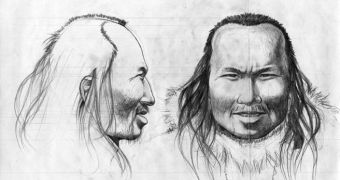Geneticists have been recently able to conduct the first genetic sequencing process on ancient humans, when they have analyzed a few strands of hair that have been frozen in the permafrost of Greenland for the past 4,000 years. This type of study will allow researchers to track back numerous genetic traits to our ancestors, and also get a better picture of what their predispositions might have been. According to preliminary test results, the individual whose hair was analyzed came from the Saqqaq culture, the first group of people to inhabit the northern island, LiveScience reports.
The DNA information that has been extracted from the hair also provides us with a clearer depiction of how our ancestors may have looked like. Historians were also keen on learning whether the assumption that the Saqqaq culture was the precursor of modern Inuits and Greenlanders was true or not. Apparently, the genetic record indicates that there is not a lot of merit to this hypothesis. Therefore, the man to whom the hair belonged was called Inuk, which means either “man” or “human” in the language spoken in Greenland. Details of the new test results appear in the February 11 issue of the top journal Nature.
University of Copenhagen in Denmark scientist Eske Willerslev, the expert who made the discovery, has been searching for usable human DNA in Greenland for many years. In a discussion he had with Dr. Morten Meldgaard, the director of the Natural History Museum in Denmark, Willerslev learned that digs conducted in the 1980s had revealed tufts of hair in the permafrost, so he asked the official for permission to test the material for any genetic information it might contain. Because the hair was less prone to the influence of mold and bacteria than any other part of the human body, he was able to make good use of it.
Bones, for instance, are porous, which means that they are more likely to provide a spawning ground for microorganisms that contaminate the samples. He and his team were therefore able to obtain a genome sequence that was roughly 80 percent complete, which is similar to modern results experts get from living humans. These are also the first remains to be discovered of the people who first settled in the New World Arctic. The Saqqaq culture was proven to be more related to people living in the Siberian Far East, such as the Nganasans, Koryaks and Chukchis.

 14 DAY TRIAL //
14 DAY TRIAL //